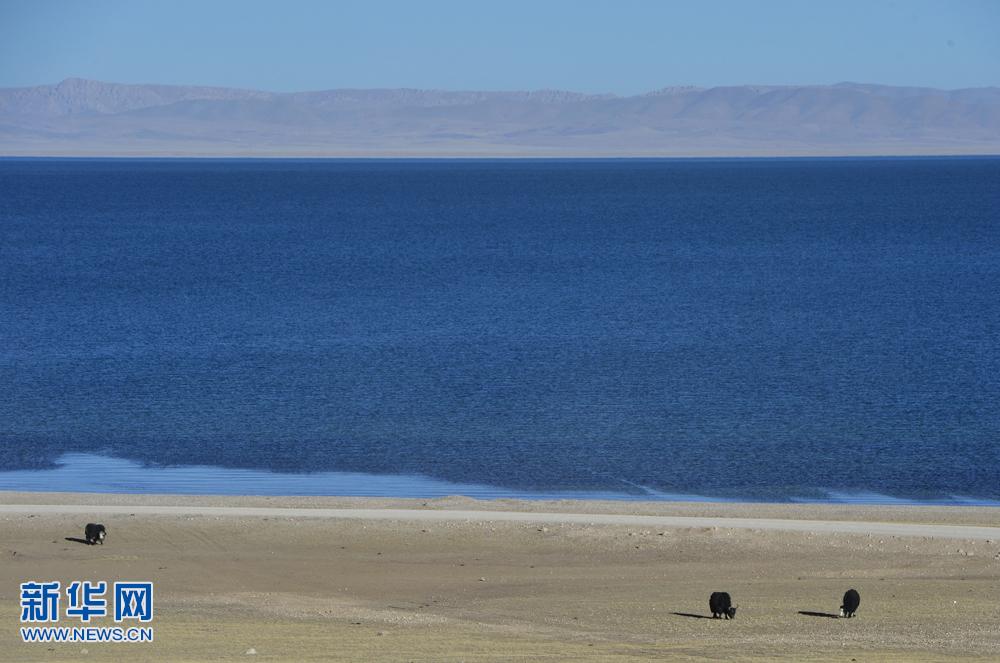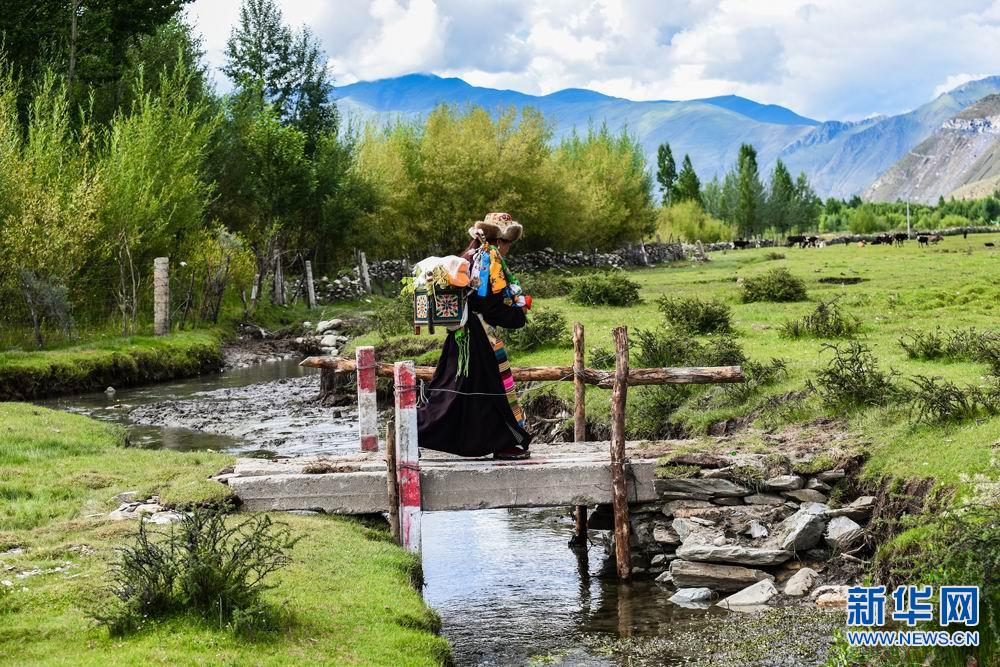Economic development without environment damage: Tibet
It is at the end of April. Driving along the Tibet Shannan section of the 318 National Highway, you will find beauty is all around you. From afar, the green plants by the roadside contrast with the white snow on the mountain tops. It's hard to imagine that many years ago it was still a desolate beach here.
With an average altitude of more than 4,000 meters and rivers and lakes scattered all along the plateau, Tibet is well known as "Asia's water tower" and the "world's climate regulator".
Therefore, protecting environment means protecting productivity; improving environment means developing productivity; the green mountains and clear rivers are like golden and silver hills, so is a world with ice and snow. "This has always been the guiding work strategy of the Tibet Autonomous Region", said Ding Yexian, Executive Vice Chairman of TAR.
Make the sky bluer, land greener and water clearer
In 2014, in order to conserve water, prevent wind and fix sand, Tibet Autonomous Region launched an afforestation project, which involved an area concentrating more than 80% of Tibet's population in the river valley of the "Six Rivers", namely, Brahmaputra River, Nu River, Lhasa River, Nianchu River, Yalong River and Shiquan River. Take the Brahmaputra River valley (Qushui to Sangri part) as an example, the number of days of disastrous dusty weather reduced from 85 in 2000 to 32 in 2015.
In 2016, Tibet invested a total of 8.4 billion yuan in the afforestation project along the river valley of the "Six Rivers", and over 56 thousand hectares of trees was planted.
At present, water and air environment in Tibet is in very good condition. To be specific, the water in rivers, lakes and underground is all of first or second rate quality, and the air quality is consistently good.
Economic development without environment damage
"Pure Land" is resource as well as a name card. In 2014, Lhasa, capital of Tibet launched the Pure Land health industry and started promoting organic agricultural production. After a couple of years, the industry has already become one of the pillar industries in Tibet, alongside the cultural and tourism industry. In 2016, the industry generated a total output of 10 billion yuan. In addition, 17 categories of "Lhasa Pure Land" trademarks have received their trademark registration certificates, covering nine leading industries including pharmaceuticals, jewelry, food, beverages and others.
In the Zhizhao Pure Land Health Industrial Park in Lhasa's Chengguan District, there is China's highest modern ecological ranch. In the high-level modern dairy farming center, there are over 2000 cows with a daily milk production of seven tons. The center has established a waste recycling system, helping it achieve zero emissions from waste. It is also producing high-quality bio-organic fertilizer to be used for the organic crops in the industrial park. The Tibetan eggs often eaten by people inf Lhasa, the fresh milk they drink in the morning, and the vegetables bought just outside their residential area all originate from this industrial park.
"Development in protection and protection through development", this is the development idea of Tibet. Lhasa Pure Land is only an epitome of the development of Tibet's green economy. During the 50 years since the establishment of Tibet Autonomous Region, it has seen rapid economy development with persistent environmental protection.
Farmers are reaping the rewards of "green economy"
At the end of March, the Lulang International Tourism Town in the eastern part of Nyingchi's Bayi District officially opened for business. Relying on the small town for business, almost every local household has opened a guesthouse, helping the town achieve roughly 20,000 yuan per capita income in 2016.
In 2015, in the Basum Co scenic area, Gongbo Gyamda County, 898 local farmers began to offer tourism services, with income reaching 20.258 million yuan.
In Chanang County, Shannan prefecture of Tibet, the 59-year-old villager Paljor has been planting trees for more than ten years, with an annual income of millions of yuan. Besides, he has also led his fellow villagers to get out of poverty.
Tibet's "green economy", characterized by green, recycling and low carbon, is not only bringing wealth to the local people, but also instilling the concept of ecological civilization in the hearts of the people.
In 2016, Tibet allocated 25.87 million worth of special funds to improve seven scenic areas, including Basum Co, with a focus on improving environmental protection facilities. Development of the scenic areas not only boosts the local economy, but also helps solve the difficult issues of protecting local environment and providing food for the local people. According to Paden Tsewang, deputy director of the Gongbo Gyamda Tourism Bureau, Basum Co scenic area received 180,000 visitors last year, with ticket sales of 18.63 million yuan.
In another example, Nyimg Dorje built his Zhuoma Guesthouse in 2011. As the first batch of guesthouses in Luobu Village, Lulang Town, it can accommodate 20 guests at a time and brought in a net income of 150,000 yuan last year.
According to official statistics, in 2016, Tibet received a total of 23.15 million visitors and achieved 33 billion yuan in total income from tourism. More than 100,000 farmers get rich through tourism and 26,000 poor people get out of poverty.
Your Comment
Name E-mailRelated News
-
;
-
-

-
Tibet bans crossing of nature reserve
Southwest China's Tibet Autonomous Region has banned visitors from passing through a state nature reserve to access other areas, as an environmental protection measure.
-
-
-

-
Tibet's major economic growth indicators rank first in the country
Five of the seven major economic growth indicators of Tibet in the first quarter rank first in the country, approved by the National Bureau of Statistics, according to information from the region's meeting of economic operation analysis.
-
-
-

-
Green development: a consensus in Tibet
Environment protection has been given more and more attention in the last few years and is a bottom line in development. Though Tibet has kept its blue skies and crystal blue waters, there is no exception to this rule.
-
Based in Lhasa, Tibet Vista is a Tibet travel agency that specialized in Tibet permit, and Tibet tours for both private and group travelers at a local price!
•4 Days Lhasa City Group Tour from USD 460 •8 Days Everest Base Camp Group Tour from USD 850 •15 Days Mt.Kailash Group Tour from USD 1780 •2016 Tibet Train Tours from Beijing, Shanghai, Chengdu, Xining,etc










